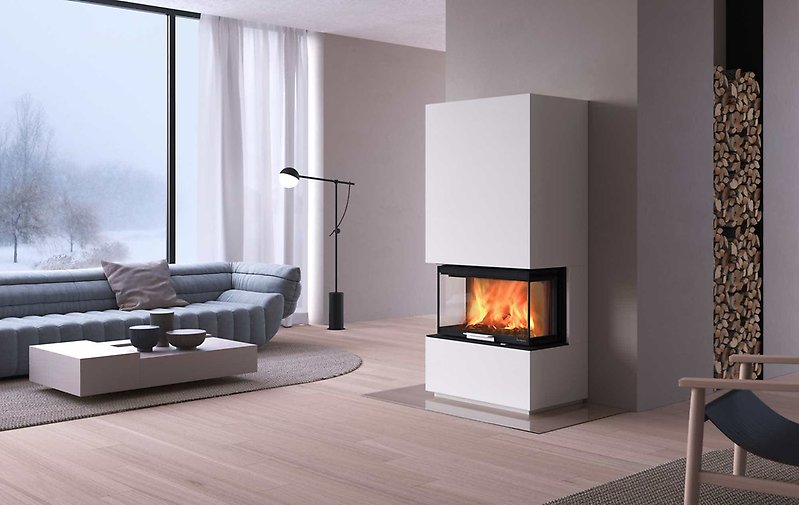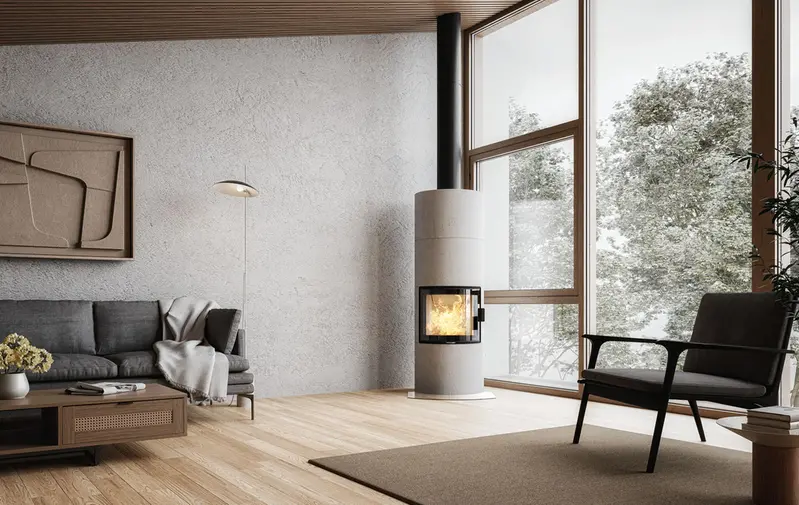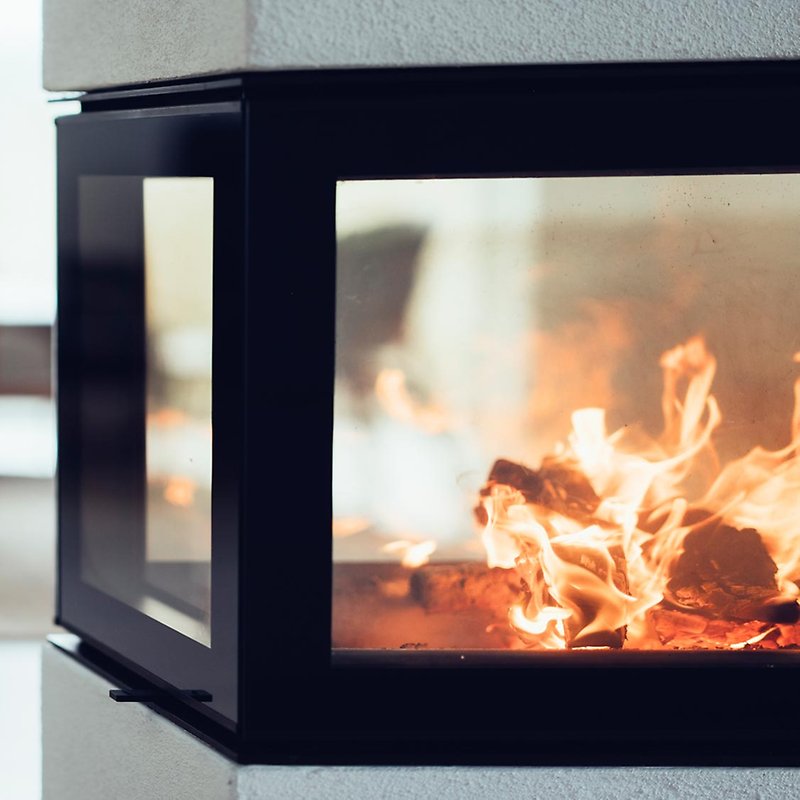Avoid having to constantly clean the glass on your stove and fireplace
Dry firewood and correct combustion are crucial.
A significant part of the fireplace experience is being able to see the flames dancing, and enjoying the special light that comes from the fire. That's why many people choose a fireplace or stove with large glass panels. It would be a shame if you constantly have to clean the glass because it gets sooty to the point where you can hardly see inside the stove anymore.
Not only is it annoying and time-consuming to have to clean the glass constantly, but it also likely means there is something wrong with the firewood you are using or the way you are firing.
Tips
- Fire with good draft
- Use dry firewood
- If you need to clean the glass, use damp paper dipped in ash

Use dry firewood
The most important thing when firing is to use dry firewood. Burning wet or damp firewood can result in poor and low-temperature combustion. The consequence is the formation of soot during the combustion process. Some of this soot settles on the glass, but it also accumulates in the chimney. Over time, this becomes a bigger problem than just the glass, as it increases the risk of chimney fires.
The moisture content of firewood should not exceed 20%, and the easiest and most accurate way to measure it is by using a moisture meter. You can also get a good indication by tapping two firewood logs together. If you hear a clear sound, the wood is dry.
Fire the correct way
It is particularly important to ensure that the fire receives sufficient air supply. Without enough air, the combustion temperature will be lower, and the fire will produce more soot. Keep in mind that clean-burning stoves, which are most common today, require more air than older stoves.
If you are experiencing draft problems, you can do the following:
- Ensure that air vents and any dampers are open. You can also slightly open a window to improve air supply, especially during ignition
- Check if access doors or other appliances connected to the chimney are sealed properly
- Ensure that gaskets and connections are tight and not allowing false air entry
- Clean the stove regularly
- Sweep the flue periodically
Proper firing also involves igniting the fire correctly and adding new logs in the right way. In short, you should ignite the fire from the top to ensure the most efficient combustion and minimize the number of unburned gases settling on the glass and in the chimney.
Look at our short firing guides for tips and advice.
When adding new logs, avoid using too large pieces. Smaller logs ignite more quickly and reduce the amount of unburned gases to a minimum. The best time to add new logs is when the fire has turned into embers, meaning there are no visible flames.
PS! When you do need to clean the glass, there are specialized products available for that purpose. However, the simplest and cheapest method is to use slightly damp paper, dip it in the ash from the stove, and clean the glass with it.





